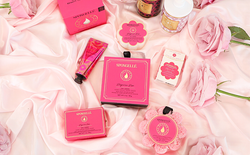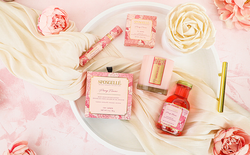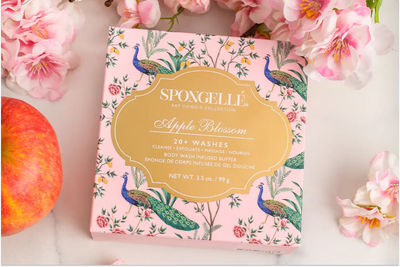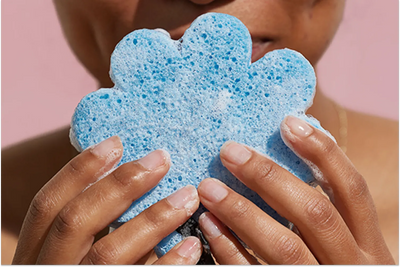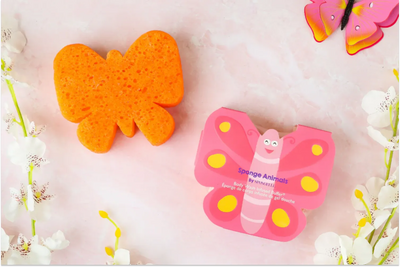We all love to take care of our skin. It feels good, and it makes us feel good knowing our body is taken care of. Sometimes though, we find that we have issues with our skin and aren’t sure of how to fix it.
Dehydrated skin vs. dry skin: knowing the difference will help you attach the problem at the source and revitalize dull, irritated skin.
Dehydrated skin is often mislabeled as dry skin. Both come with their own set of problems. And while they can be treated similarly, there are some critical steps to healing dehydrated skin.
What is dry skin?
Dry skin is rough or cracked, scaly, or red skin that can be itchy or flaky. Dry skin can become dry due to weather, climate change, overexposure to hot water or artificial heat, harsh cleaners, or even because your skin naturally produces less oil or sebum than it should.
Sebum is our skin’s natural moisturizer and protectant. It is made in the sebaceous glands. This is the stuff that can cause your face to seem oily or greasy. Our sebum production can get out of whack quite easily these days due to medication, environmental factors, working conditions, and even our own skincare routine.
So, how do you start to identify the problem?
Characteristics of Dry Skin
There are a few ways to tell if you have dry skin or not:
- Tight feeling skin
- Rough feeling and looking skin
- Peeling, flaking, or scaling of the skin
- Itchy and scratchy skin
- Noticeable cracks in your skin that can sometimes bleed
- Red, inflamed skin
- Dull gray or ashy skin
Through the right process, we can affect and change our sebum production, bring moisture back to our skin, and heal our dryness. All you need to do is consider what products you’re using when you bathe. This is a critical part of your skin’s health regimen.
What are the steps to take to prevent further dryness in the skin?
If you do have dry skin, there are a few steps you can take to increase moisture in your skin as well as retain the moisture that is naturally produced.
- Moisturizing regularly to help keep your skin’s natural oil barrier hydrated.
- Limiting your skin’s contact with very hot water. Try warm showers instead of hot.
- Avoid harsh soaps that dry out the skin and replace it with gentle hydrating cleansers.
- Protect your skin from harsh chemicals when cleaning or washing dishes.
- Wear the right weather protection in winter by covering up your skin.
- Always apply SPF before leaving the house.
These tips will help you create and lock in more moisture so your skin can be healthy throughout the weeks, months, and years.
How do I treat skin that is already suffering from dryness?
If your skin is already dry, you may want to consider these ideas to begin relieving the dryness.
- Add in a gentle exfoliation and moisturizer routine. This will help remove the dull, dry, cracked skin and assist moisturizers in penetrating the damaged skin.
- Choose a glycerin-based body wash to help pack moisture into every step of your skincare routine.
- Apply lotion before bed every evening and again in the morning.
- Try a body soufflé or cream, packed with emollients like shea and cocoa butter, to penetrate deep into all the layers of your skin and keep fresh new cells moisturized as they rise to the top.
If you find yourself in a situation where exposure has damaged your skin, don’t fret. Follow the steps above, pay attention, and be gentle with your skin. Chances are you’ll notice a difference as soon as you begin to care for and treat it.
Being knowledgeable of the factors that cause dry skin means that you can approach your day prepared with the tools to keep it at bay.
What is dehydrated skin?
Dehydrated skin is tight, rough, red, sensitive, oily, and blemish-laden skin. Though dehydrated seems to have some of the same features and issues of dry skin, the main difference is that dehydrated skin is lacking in water and not oil. You can still have oily skin on top of dehydrated skin.
Thirsty skin does not stop producing sebum, so your skin can be itchy as well as oily at the same time.
One of the main ways to tell if you have dehydrated skin is to look for an increase in fine lines and wrinkles and test your skin’s elasticity. Grab a section of skin either on the back of your hand or on your cheek and pinch it. If the skin snaps back to place quickly, it is probably well-hydrated. If the skin takes its time slowly lying back down, you need to up your hydration game.
Characteristics of Dehydrated Skin
While you may have dry skin, it’s important to consider whether or not it’s actually dehydrated. The difference between the two changes what solutions you’ll need to combat it. Here’s what dehydrated skin looks like:
- Dullness
- Itchy and scratch skin
- Red and blotchy skin
- Acne and blemish breakout-prone skin
- Predominant wrinkles and fine lines in the skin
Dehydrated skin is uncomfortable and unpredictable. Because excess oil and skin dehydration go hand-in-hand, you may see an onset of breakouts and blemishes. Dehydrated skin can make applying makeup difficult and less effective at hiding imperfections.
But dehydrated skin can be corrected. It takes dedication, like any new skincare routine, but with the right steps your skin will bounce back to a healthy glow.
What are the steps to take to rehydrate dehydrated skin?
Following these steps can help reinvigorate dehydrated skin. The more you follow, the better chance for continuous success.
- Drink more water. Sounds simple and silly, but hydration happens on a cellular level. Drinking more water replenishes the water levels in the individual cells that our bodies are made of.
- Eat hydrating foods. Fiber helps us keep a store of water on hand for our body to use as needed. Eating fruits and veggies filled with antioxidants and fiber can assist with keeping skin hydrated.
- Use a humidifier. If you work or sleep in a dry environment the moisture in your skin could be evaporating at a rapid rate. Using a humidifier will add much-needed moisture back into the air and back into your skin.
- Avoid harsh acne treatments. Instead of treating your blemishes with harsh alcohol or salicylic acid-based cleansers, try an oil cleanser instead. Oil cleansers can break through build-up in our pores without damaging our natural oil layer on our skin. It is natural to think that we need to treat our blemishes with harsh treatments to dry them out and get them gone when the reverse is actually more effective. Oil cleansers moisturize while cleansing and don’t damage the skin.
- Moisturize as often as you can. Add in as many layers of moisturizing as you can to keep water from evaporating from your skin. Try a moisturizing cleanser or body wash, moisturize every evening before bed, and again in the morning.
- Get a good night’s sleep. Studies have shown that getting a solid eight hours of sleep actually helps your body stay hydrated. If you are having trouble sleeping at night, try drinking a glass of water before bed, implement your new moisturizing routine while giving your limbs and legs a good massage. Relaxing your body before bed can help you wind down and be ready for some magical shut-eye.
When we get thirsty, we drink water. Our body helps us naturally respond to dehydration, but we don’t always follow the signs of dehydration, especially when it comes to our skin.
Confront Your Dehydrated Skin
Implementing a moisturizing routine and drinking more water are your first and most important steps for healthy skin cells packed with the water and moisture they need to make it through the day.
It’s crazy to think that simply getting enough rest will help your body stay hydrated and your skin supple. There is a reason it is called beauty sleep!
Remember that dry skin is a skin type while dehydrated skin is a temporary state caused by internal and external factors. If you catch it quickly and implement new habits into your routine, it will be easy to maintain healthy, hydrated skin.
Don’t starve your precious skin. Locking in and maintaining the moisture in your skin will increase the longevity and youthful appearance we all crave. And, hydrated skin equals less wrinkles.
A great way to do this is to get a sponge that is infused with a moisturizing body wash. Once you use one for a while, you’ll begin to notice a difference in the health of your skin, and you’ll keep bacteria at bay by switching out your sponge regularly.
Take care of yourself, and stay hydrated!
Sources:
https://www.womenshealthmag.com/beauty/a23495578/dry-skin-in-winter-remedies/


